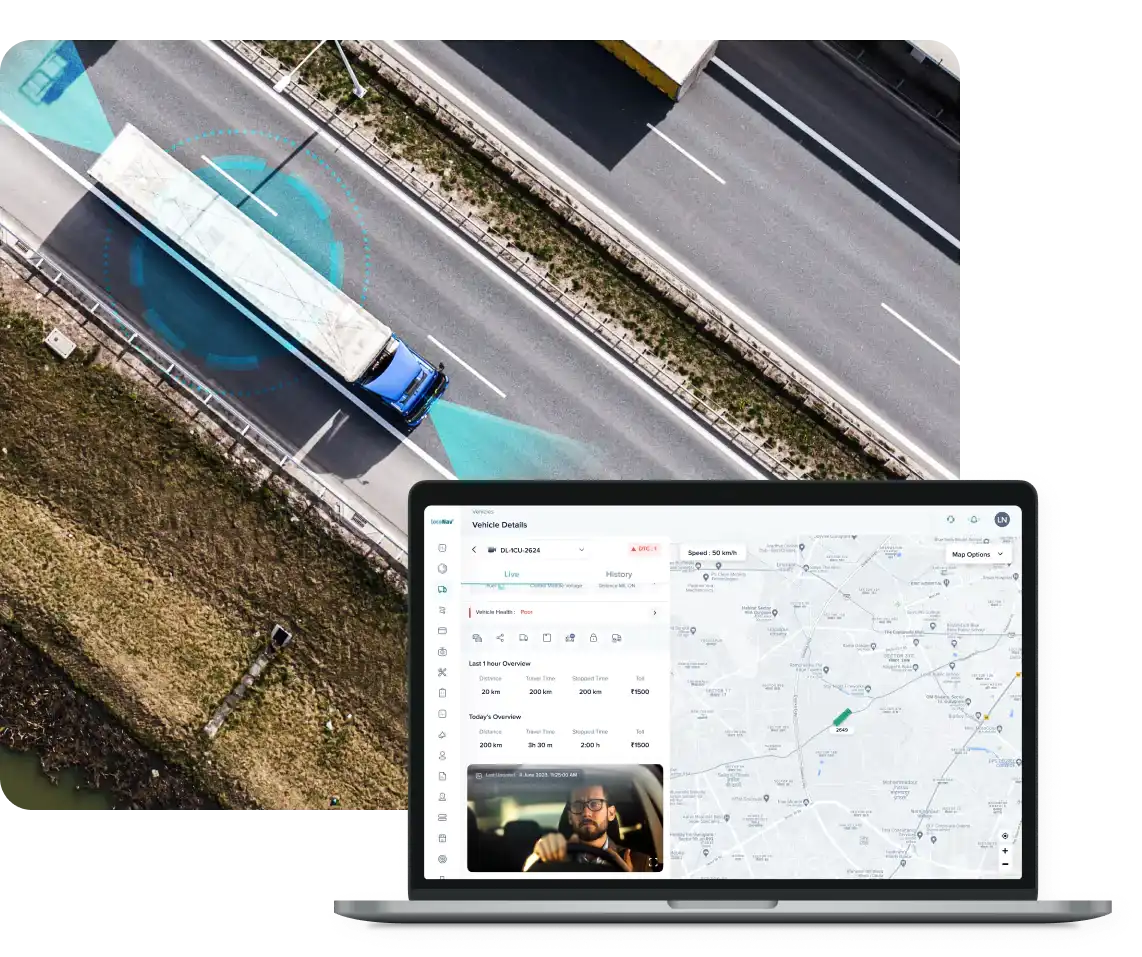Advanced Video Telematics Solution
Utilize cutting-edge AI-driven video technology to safeguard your most valuable assets your vehicle, cargo, and drivers.


Why locoNav
Keep an Eye on your Fleet and Protect your Business
Unparalleled Fleet Visibility
Unmatched visibility into on-road & in-cab incidents as they happen.
Enhanced Fleet Safety and Efficiency
Full-Stack Offering With Best-In-Class Value
ADAS alerts for on-road events, such as forward collisions, tailgating, & more
DMS alerts for in-cab incidents, such as distracted or drowsy driving, & more
Driver Scorecards to Rank, Reward, & Coach Drivers
6 months of Cloud Storage for DVR & Incident Video
3-year Industry-Best Warranty for Dashcams
100 mins Live Streaming per Vehicle per Month

What Our Happy Customers Say
Resources
Read our blogs to learn more about Video Telematics


Frequently Asked Questions
Advanced driver-assistance systems or ADAS levels are technical features that are intended to improve vehicle safety. When appropriately designed, these systems, also known as ADAS, leverage an interaction to increase the driver’s capacity to react to road hazards. ADAS levels are various levels of automation available.
With advanced warning and automated systems, these systems improve safety and response time to possible threats. Some of these systems come standard on specific vehicles, while aftermarket features and even full systems can be added later to customize the vehicle to the driver.
Fleet and driver safety is a common concern for all fleet managers. Be it any industry, safety is a top priority. Due to the nature of their job, fleet drivers are expected to drive for long distances and hours. Most heavy-duty vehicles are only allowed to commute during the night as per legal compliances. This largely contributes to commercial vehicle road accidents. These accidents not only affect your fleet of vehicles and drivers but also endanger the lives of other people on the road. This common occurrence has given rise to the need for a Driver Management System (DMS).
G sensor, gravity sensor, or accelerometer on a dashcam is used to measure accurate acceleration, also known as G-Force. In other words, an abrupt change in direction will be detected by the dash camera.
When an impact is detected by the built-in g-sensor, the digital rearview mirror will immediately lock the current file and store it in a standalone file for you to examine and download later. Based on the driving conditions, the responsiveness level can be set to “High,” “Medium,” or “Low” in the settings.
For example, if you decide to go off-roading, you might want to set the sensitivity to low to avoid freezing too many files. You can see the incident footage directly on the digital screen via video playback, or you can take out the SD card and upload the file to your laptop or desktop.




